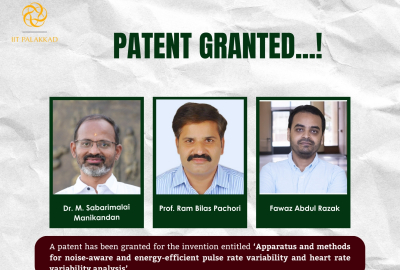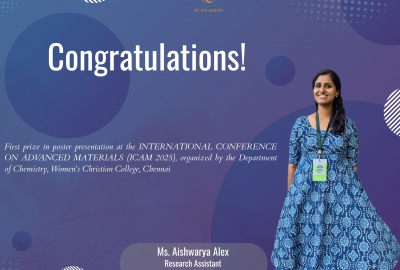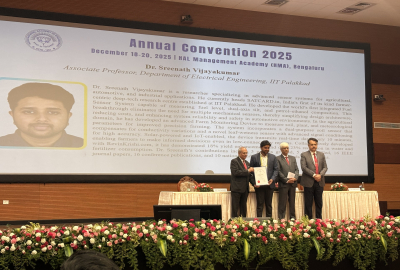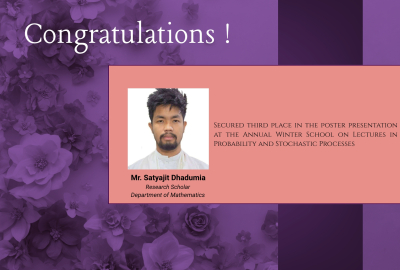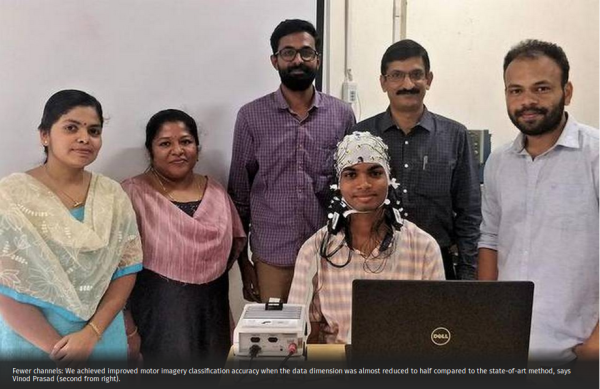
IIT PALAKKAD RESEARCH FEATURED IN PRINT MEDIA
A trained neural network was used to develop a system that could effectively benefit stroke patients
The use of cybernetics to carry out rehabilitation therapies for stroke patients is a fast-developing field of research. Within this, the brain-computer interface is an important area being studied. IIT Palakkad researchers have found a way to improve the functioning of the brain-computer interface when used by stroke patients.
Stroke patients who suffer from paralysis of limbs now have a different route to follow as far as rehabilitation therapy and eventual recovery of use of their limbs are concerned. This is by using a brain-computer interface. The interface provides a two-way communication between a person’s brain and an external device, such as an electro encephalograph.
Optimisation problem
This is effected by electrodes placed on the person’s head close to specific brain regions. Communication certainly improves as the number of channels – electrodes attached to the brain region – is increased. But the downside is that increasing the channels makes computation more complex, increases preparation time and is inconvenient for the person. Thus, it would be preferable if there was a way to filter out and retain only the most useful and informative channels. Thus, there is an optimisation problem at hand.
New method
The IIT Palakkad researchers have used a trained neural network, with inputs from neuroscience, to develop a new channel-selection method that makes the process more efficient and effective. The research is to be presented at the 2019 IEEE International Conference On Systems Man, and Cybernetics, to be held in October in Italy.
In the experiment, the subject sits on a chair and imagines clenching his or her right or left hand in accordance with a cue that is flashed on a screen. Then he or she is given a cue to imagine relaxing his or her hand. Electrodes placed on the person’s head near the appropriate brain area convey this to an electro encephalograph (EEG), which decodes their thought. Each of the 10 persons was asked to respond to 100 random cues to imagine clenching either left or right hand and the signal was observed.
Close to 75% accuracy was observed in the way the participants classified the cues. “We achieved improved motor imagery classification accuracy when the dimension of the data was almost reduced by half compared to the state-of-art method. The average classification accuracy obtained for 10 subjects is 74.3 with only 13 encoded channels (reduced from the initial 32 channels),” says A. Vinod Prasad, who led the study, in an email to The Hindu.
The group has developed an artificial neural network that actually makes this system work, by selecting the most informative channels and omitting the unnecessary ones. “There are two major research challenges in motor imagery classification. The first challenge is the variability of brain signal features between different individuals,” says Prof Vinod Prasad. “The second is the variation of signal features of an individual person over a period of time. Robust signal processing algorithms and machine learning techniques are needed to address these two challenges. We contributed in this direction,” he adds.
Uses in therapy
At present, stroke patients undergo a passive rehabilitation therapy — the patient plays a passive role while the physiotherapist actively helps by moving the patient’s paralysed limb. Development of the motor imagery brain-computer interface can help develop an active rehabilitation therapy where the patient can move his limb according to his own movement intention (motor imagery). “Stroke recovery significantly enhances with such an active rehabilitation based on motor imagery because it assists in building new neuronal interconnections that take over the functionality of affected brain regions [brain plasticity],” says Prof. Vinod Prasad.
The news appeared in The Hindu on 18 August 2019.

